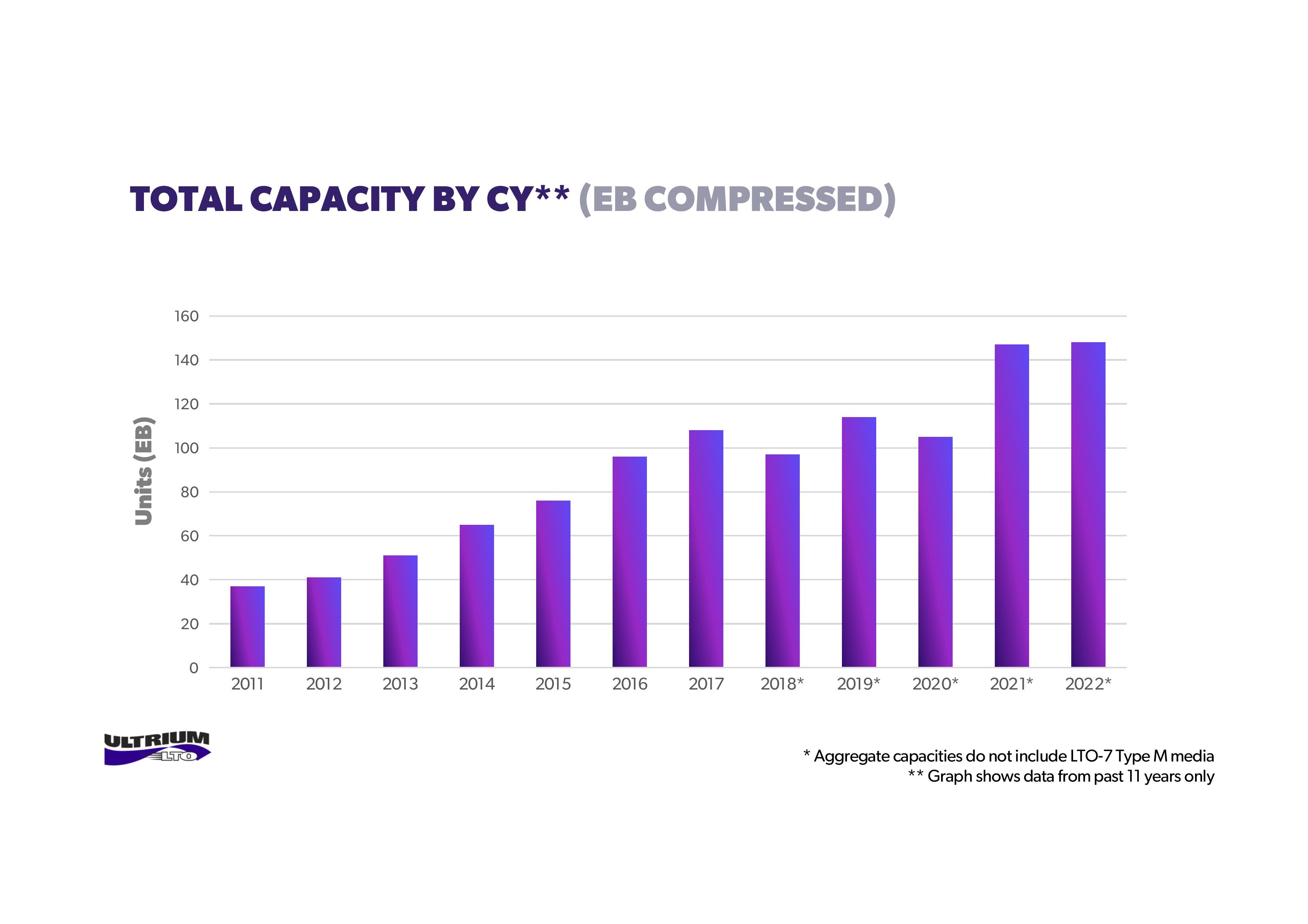Tape Storage Trundles On, Increases Yearly Volume to 128 Exabytes
For a storage medium said to be dying, tape is looking pretty good.

"Tape storage is dead" is one of those prophecies that has never seemed to actualize itself: demand for slow yet cost-effective and reliable storage solutions hasn't gone the way of the dodo. On the contrary; the LTO (Linear Tape-Open) Program group (a collective of tape specialist companies made up of HPE, IBM and Quantum Corporation) just announced a 5% YoY increase in shipments compared to the same period last year.
That may not seem like much, but the bigger context is that that 0.5% growth rests atop a staggering 40% volume increase seen last year. In a market that's seen contractions, layoffs, and lowering sales volumes, that has to count as a win (a number of well-known hardware companies would have loved to show these results in their latest earnings report, after all).
The LTO shipments report also demonstrate the speedy adoption of the latest technology, LTO-9, compared to other technological leaps. LTO-8 continues to be a great seller for value-conscious buyers — its 30 TB of compressed capacity and up to 750 MB/s data transfer rates are nothing to scoff at. But LTO-8 has been superseded by the 9th iteration, which has increased compressed data density (up to 45 TB) and transfer rates of up to 900 MB/s.
And while total number of tapes shipped has been declining, it's important to remember that a tape of today can offer the same storage capacity as many tapes of yesterday. If you wanted 45TB of compressed storage on an LTO-5 product stack, you'd be looking at buying 30 1.5 TB LTO-5 tapes — volume lies in capacity, not on number of units.
No, tape isn't dead, and contrary to what you may have read, HDDs aren't going to be extinct by 2028, either. But while HDD shipments cratered by around 35% this year, tape still found room to grow. Technologies last much longer than we give them credit for, and the AI boom for unstructured data means increased demand for cheap, reliable, and capacious storage. The LTO Program's growth being mostly fuelled by hyperscalers and enterprises is a testament to that.


Get Tom's Hardware's best news and in-depth reviews, straight to your inbox.

Francisco Pires is a freelance news writer for Tom's Hardware with a soft side for quantum computing.
-
cyrusfox Still an Industry/enterprise niche.Reply
I like the stability of offline hard storage, but have you looked at the price of an external Tape drive... Not going to be used by consumers any time soon. You can get LTO4/5/6 for a couple Hundred on ebay, missing out on the speed and capacity of the newer drives as well as most are SAS backplane... Maybe I'll pick up some discount LTO9 in 8 years or will it be entirely redundant by then? These speeds are much better than micro SD cards with a lot more shelf stability. -
kanewolf Reply
Home users don't want to deal with the enterprise interfaces of tape drives. Fiber channel, maybe SAS. Not interfaces that are convenient for home or desktop users.cyrusfox said:Still an Industry/enterprise niche.
I like the stability of offline hard storage, but have you looked at the price of an external Tape drive... Not going to be used by consumers any time soon. You can get LTO4/5/6 for a couple Hundred on ebay, missing out on the speed and capacity of the newer drives as well as most are SAS backplane... Maybe I'll pick up some discount LTO9 in 8 years or will it be entirely redundant by then? These speeds are much better than micro SD cards with a lot more shelf stability. -
Kamen Rider Blade The biggest problem is the single reel design of LTO Tape Cassettes.Reply
Depending on the machine to "Not Screw Up" and eat your tape and forcing a complicated method to open up the machine to get your tape out.
That's a big No/No in terms of end user simplicity and reliability.
I prefer the old 2 Reel Tape Cassettes with integral Spools/Reels.
Alot of the major issues is the fundamental designs are targeted towards complicated Enterprise Tape machines instead of building high reliability / simple tape mechanisms mimic-ing Digital Cassette Tapes that don't tug on the tape reel from the cassette -
markhahn Reply
tape isn't aimed at consumers. it really only makes sense in large libraries in datacenters,kanewolf said:Home users don't want to deal with the enterprise interfaces of tape drives. Fiber channel, maybe SAS. Not interfaces that are convenient for home or desktop users.
since otherwise, the expense of the drives are never amortized by the price difference between tape media and disk drives.
arguably, the market shows that consumers don't really care about data, and if they do, they put it into datacenters.